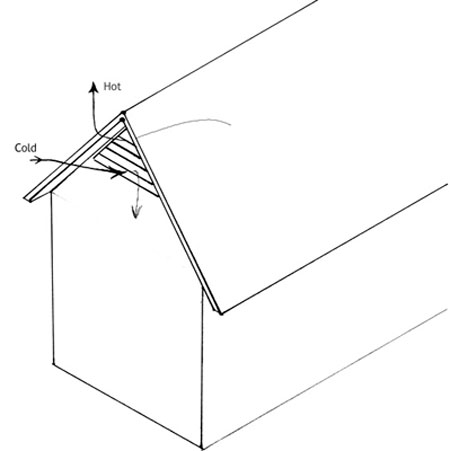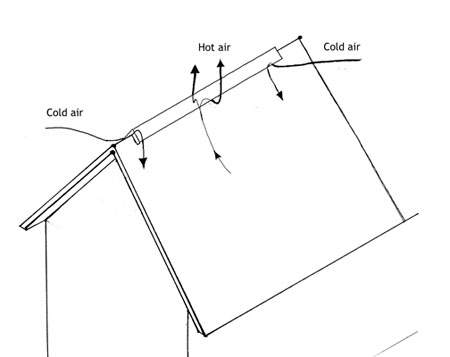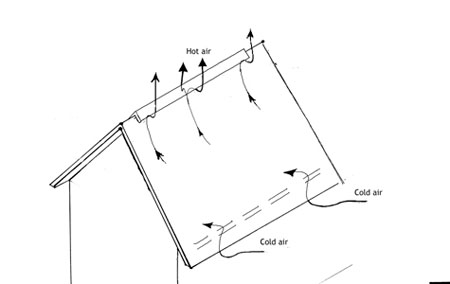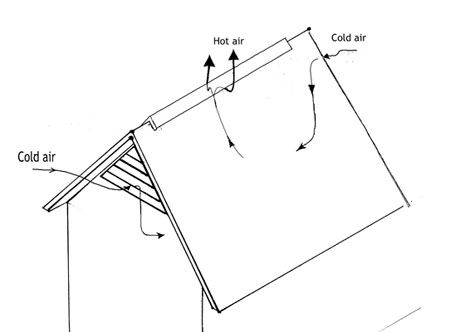
Roof and Attic Ventilation
- Category: Attic Ventilation Help
- Written by Administrator
Attic Ventilation Airflow Basics
Attic Ventilation:
-
Reduces energy costs
-
Reduces or prevents ice dams and leaks in winter
-
Prolongs the life of shingle and roof components
-
Prevents condensation and mold in the attic
Understanding how the air and wind flows in and around your house and attic is important when deciding on how to properly ventilate your roof and attic.
We know from the laws of physics that cold air is denser and heavier than hot air. Cold air sinks and hot air rises or is pushed above the cold air.
Hot air inside the attic will rise and exhaust itself through the roof vents to the outside of the house. If the hot air is flowing out of the attic, then that air must be replaced by an equal amount of air. Otherwise the roof would collapse. If the attic floor is fairly well sealed, then the replacement air will come from outside of the house. The difference in air temperature from inside the attic and outside the attic, and the size of the ventilation openings, is the driving force in the rate of air movement.
Passive Airflow - Gable Vent
A house with gable vents alone will still exhaust hot attic air. Although not very efficiently.

Passive Airflow - Ridge vent
An attic space that is only furnished with a ridge vent will still exhaust air without other intake vents. The warmest air in an attic is mostly concentrated in the center of the attic space. The air near the outer walls will be cooler as the heat radiates out of the structure. Especially if the house has large roof overhangs to keep the walls shaded.

Passive Airflow - Ridge and Gable Vents
If ridge vents and gable vents are installed the airflow pattern will look something like this.
Passive Airflow - Ridge and Soffit Vents
A basic ridge vent with soffit vent installation.

Passive Airflow - Ridge, Gable and Soffit Vents
If both ridge vents and gable vents are installed with soffit vents the cooler air will still flow into the attic space through the soffit vents and be exhausted at both the ridge and gable vents.
View a short video on passive attic ventilation with ridge, gable and soffit vents.




